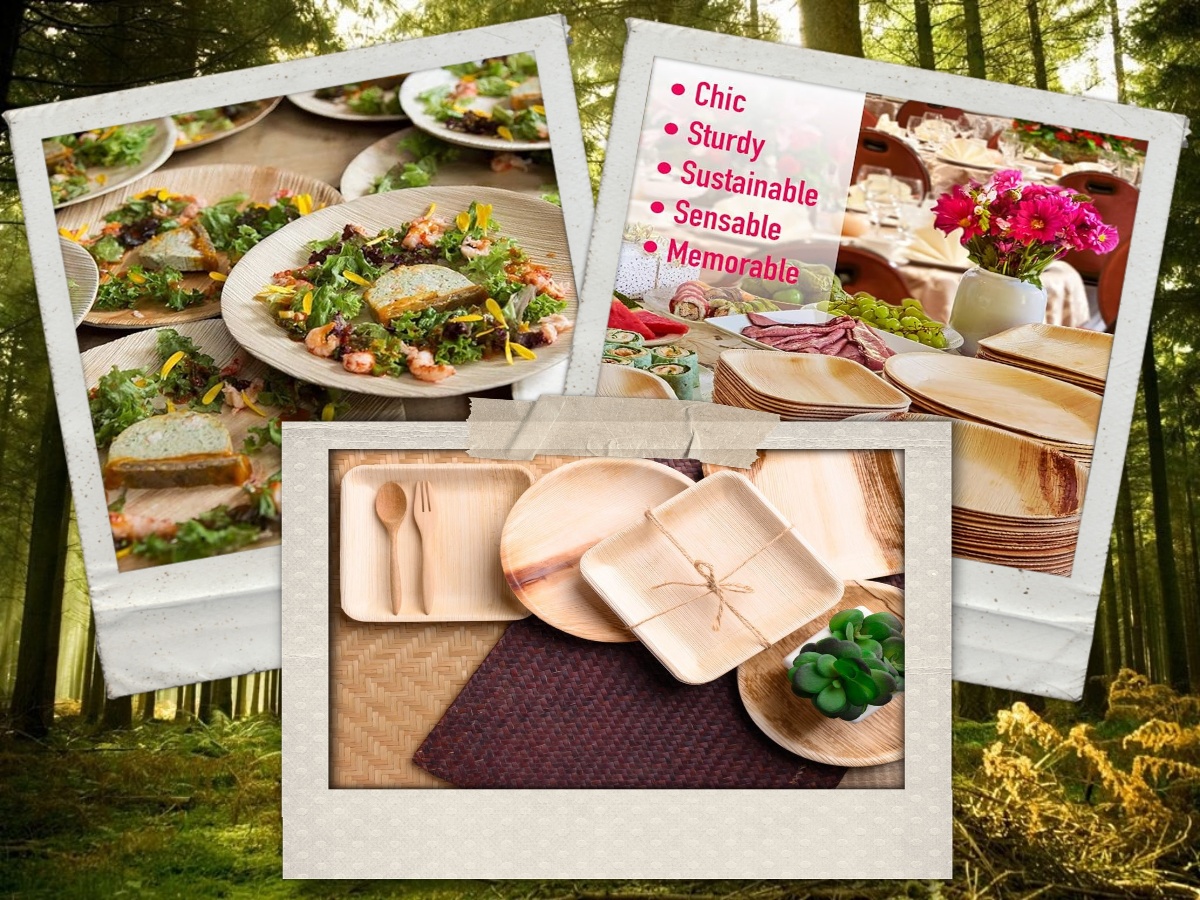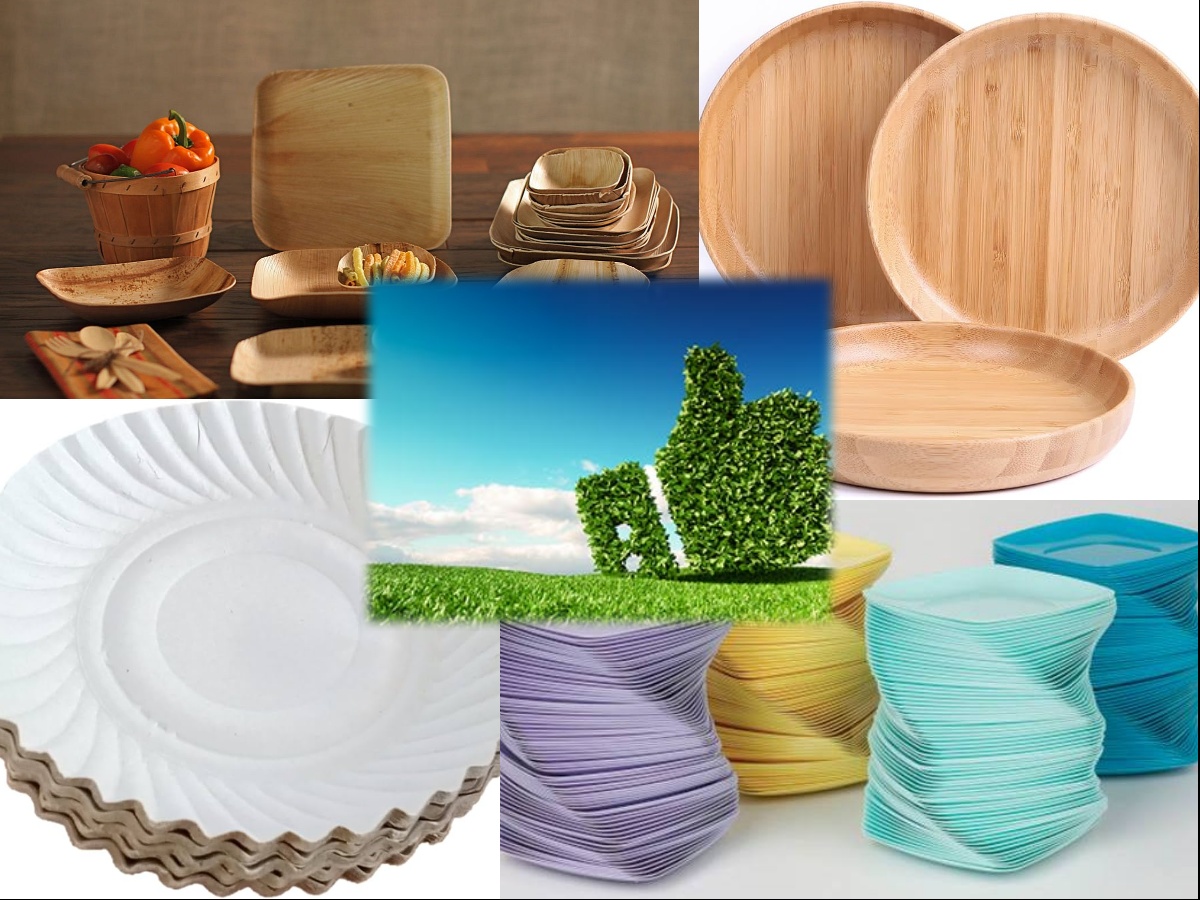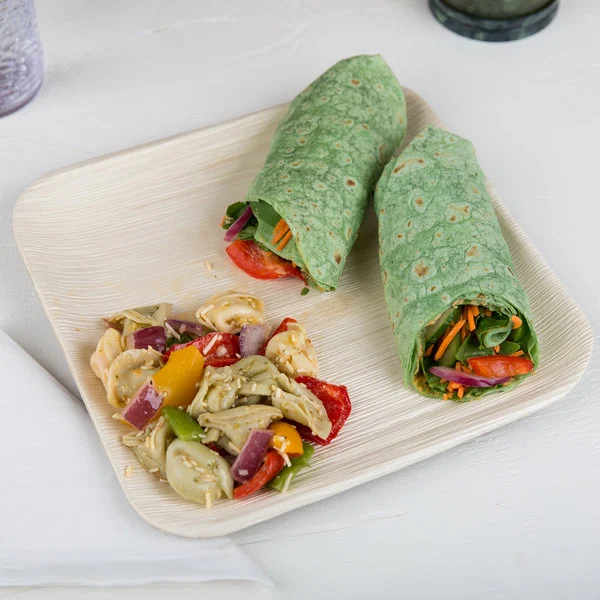In today’s world, where environmental concerns are at the forefront of global discussions, the search for sustainable alternatives to conventional products is more pressing than ever.
One such alternative that has gained popularity in recent years is palm leaf plates.
These plates, made from fallen palm leaves, offer a biodegradable and eco-friendly alternative to traditional disposable plates. However, despite their eco-friendly credentials, the use of these plates raises some ethical and environmental considerations that warrant careful examination.
Table of Contents
The Case for Palm Leaf Plates:
Palm leaf plates are typically crafted from naturally fallen palm leaves, which are collected, cleaned, and molded into disposable plates.

- Unlike plastic or styrofoam plates, which take hundreds of years to decompose and contribute significantly to pollution, palm leaf plates are biodegradable and compostable.
- They are also free from chemicals and synthetic materials, making them a healthier option for both humans and the environment.
- Furthermore, the production of palm leaf plates often supports local communities in rural areas where palm trees are abundant.
- Creating a market for these plates provides livelihood opportunities for artisans and contributes to the economic development of these regions.
- In this regard, the use of palm leaf plates can be seen as a sustainable choice that aligns with the principles of social responsibility and economic empowerment.
Ethical and Environmental Concerns:

- While palm leaf plates offer numerous environmental benefits, their production and distribution may not be without drawbacks.
- One of the primary concerns is the impact on palm tree ecosystems. Palm trees are essential components of many ecosystems, providing habitat and sustenance for various species. The extensive harvesting of palm leaves for plate production could potentially disrupt these ecosystems, especially if not managed sustainably.
- Moreover, there are concerns about the carbon footprint associated with transporting palm leaf plates to different markets. If these plates are exported over long distances, the emissions from transportation could negate some of their environmental benefits.
- Additionally, the use of water and energy in the manufacturing process, although minimal compared to other materials like plastic, still requires consideration from a sustainability standpoint.
Making Informed Choices:
In evaluating whether to use palm leaf plates, it is essential to consider the broader context of sustainability and environmental impact.

- While they offer a biodegradable alternative to plastic plates and support local communities, their production and distribution may still have environmental consequences that need to be addressed.
- One approach to mitigating these concerns is to prioritize locally sourced palm leaf plates. By sourcing plates from nearby regions where palm trees are abundant, the carbon footprint associated with transportation can be minimized.
- Additionally, supporting businesses that adhere to sustainable harvesting practices and prioritize environmental conservation can ensure that palm leaf plates are produced responsibly.
Guidelines for Cleaning, Storing, and Disposing:

Cleaning, storing, and disposing of palm leaf plates is relatively straightforward and aligns with their eco-friendly nature. Here’s a guide on how to handle palm leaf plates responsibly:
Cleaning:
- Rinse with Water:
- After use, rinse the palm leaf plates with water to remove any food residues or stains.
- You can use a gentle brush or sponge if needed, but avoid using harsh detergents or chemicals as they can compromise the natural properties of the plates.
- Air Dry:
- Allow the plates to air dry completely before storing them or composting them.
- Placing them in direct sunlight can help speed up the drying process.
- Optional Sanitization:
- If desired, you can sanitize the plates by wiping them with a cloth soaked in a solution of vinegar and water or by spraying them with a diluted bleach solution.
- However, this step is usually unnecessary for plates used for dry foods or disposed of after a single use.
Storing:
- Stacking:
- Palm leaf plates are lightweight and stackable, making them easy to store in cabinets or pantries.
- Stack them neatly to save space and prevent damage.
- Dry Storage:
- Store the plates in a cool, dry place away from direct sunlight to prevent any moisture buildup or mold growth.
- Avoid storing them in areas with high humidity.
- Avoid Compression:
- Be mindful not to stack heavy objects on top of the plates, as excessive pressure can cause them to deform or break.
Disposing:
- Composting:
- One of the best ways to dispose of palm leaf plates is by composting them.
- Since they are made from natural, biodegradable materials, they will break down easily in a compost pile or bin.
- Make sure to remove any non-compostable items like stickers or labels before composting.
- Green Waste Bin:
- If composting is not an option, many municipalities have green waste programs that accept biodegradable materials like palm leaf plates.
- Check with your local waste management authorities to see if palm leaf plates can be disposed of in your green waste bin.
- Landfill:
- While palm leaf plates are biodegradable, sending them to a landfill should be a last resort.
- In a landfill environment, biodegradation is slow and may release methane, a potent greenhouse gas.
- If landfill disposal is unavoidable, consider cutting the plates into smaller pieces to expedite the decomposition process.
By following these guidelines for cleaning, storing, and disposing of palm leaf plates, you can ensure that they remain a sustainable and environmentally friendly choice for your tableware needs. Remember to prioritize composting or green waste disposal whenever possible to minimize your environmental impact.
Conclusion

Palm leaf plates present a promising eco-friendly alternative to conventional disposable plates, offering biodegradability and supporting local communities. However, their production and distribution raise ethical and environmental concerns that warrant careful consideration. By making informed choices, prioritizing sustainability, and supporting responsible practices, we can harness the benefits of palm leaf plates while minimizing their environmental footprint. Ultimately, palm leaf plates can be part of a broader strategy to reduce waste and promote a more sustainable future for our planet.










